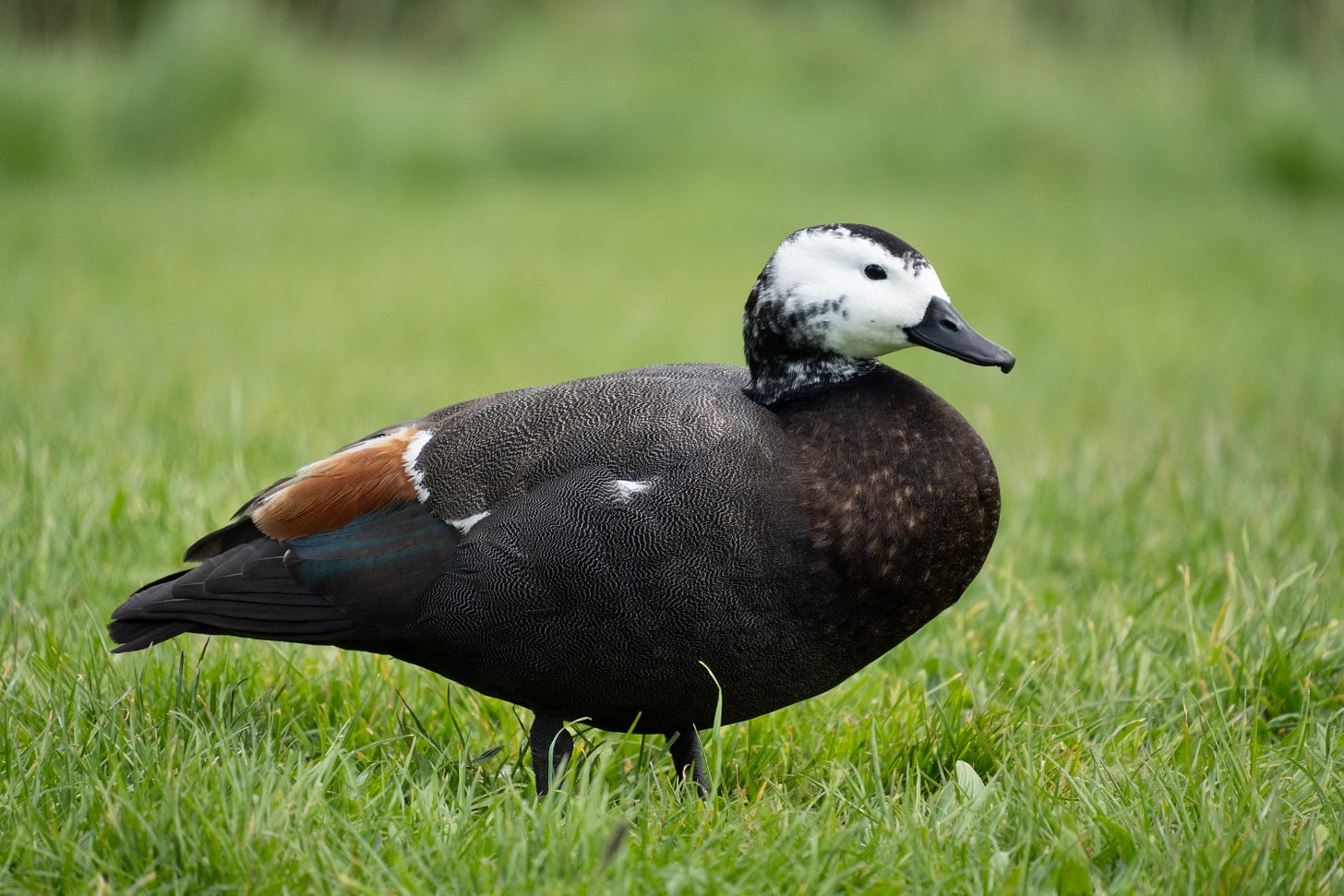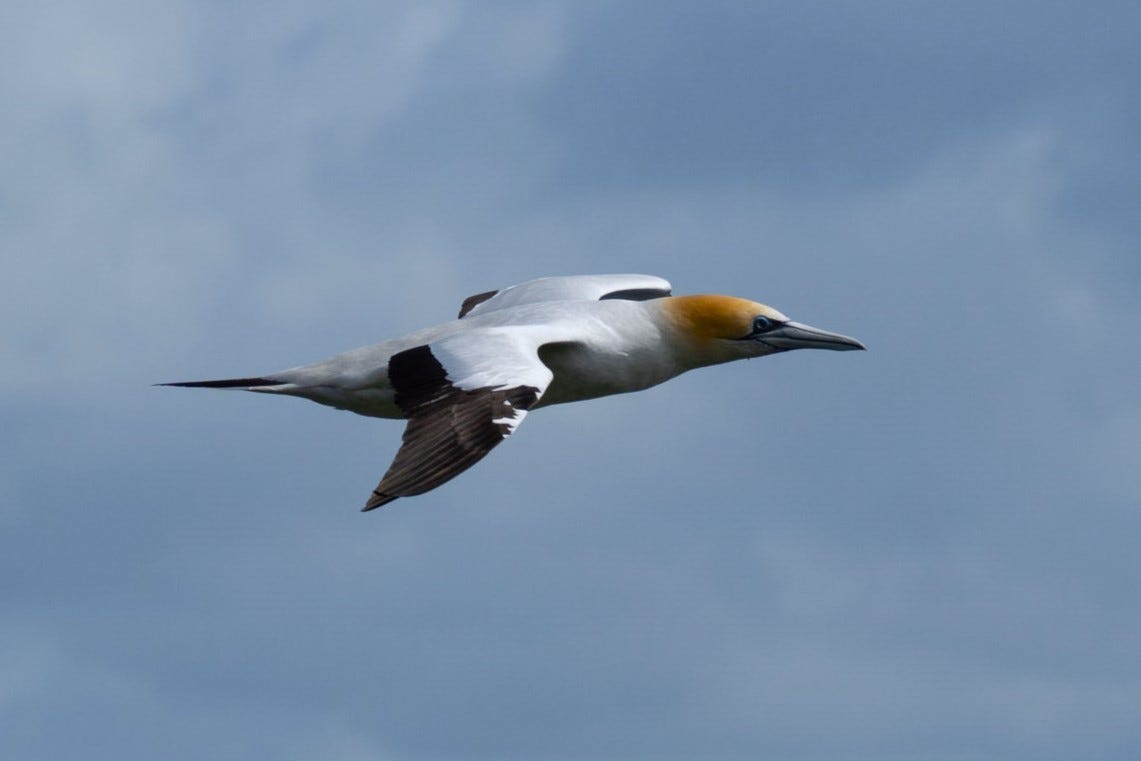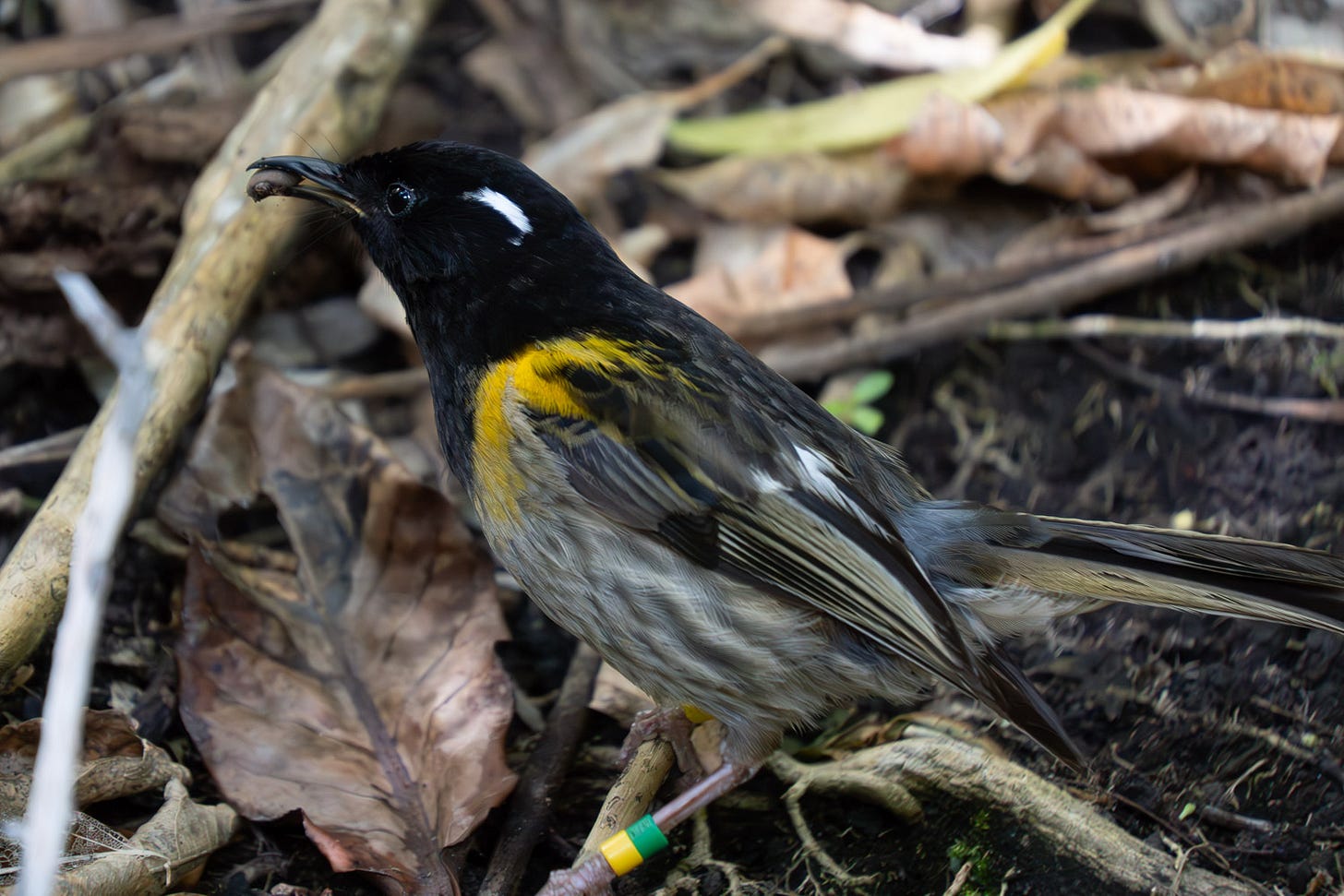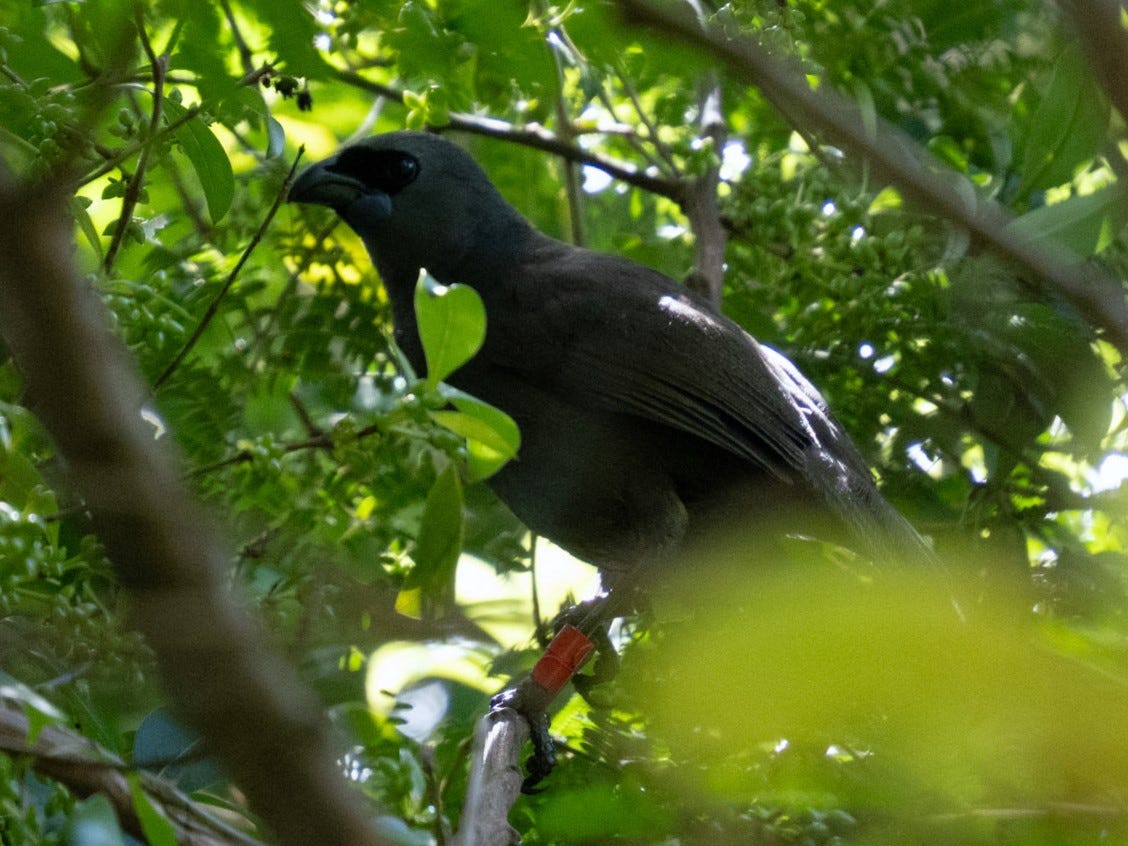Taonga of Tiritiri Matangi (3 min read)
The precious wildlife on one of our predator-free islands
Kia ora e hoa - hello my friend☀
While our region of East Otago has been hit with some serious flooding, I recently had the privilege of visiting Tiritiri Matangi, one of Aotearoa’s predator-free islands.
If you live in New Zealand you’ll know that we were almost mammal-free (with the exception of a few bat species) until the arrival of humans, which led to unique bird and insect life. Sometimes accidentally, and sometimes with intention, we brought animals with us that contributed to the decline of our native wildlife.

Today I will share some of the history of the island, and a few of the species I saw - the most exciting was the North Island kōkako, of which there are very few left and I have never seen before. I didn’t get a good photograph, but it felt like a real treat to get a glimpse of this bird that could so easily have become extinct by now.
Over the next few weeks we’ll look at some of these species in more detail, but the joy of Tiritiri Matangi is getting to see all these species in one place - so that’s what I am sharing with you today.
The story of Tiritiri Matangi
From the Tiritiri Matangi website:
Like much of the mainland, the forest on this island had been cleared for cattle and sheep farming in the 1800’s. Four gullies were largely unfarmable, so these were left forested and remained a refuge for more resilient species
In 1971 the farm lease was withdrawn. The island was designated a recreation reserve and then left to regenerate according to the wisdom of the time.
Auckland University scientists John Craig (zoologist) and Neil Mitchell (botanist) argued that natural regeneration would take many lifetimes. They advocated for a more active approach which would enable generations of young New Zealanders to witness community conservation in action.
With the successful eradication of the kiore/pacific rat in 1993, the island could finally flourish as a pest-free haven. From 1984 to 1994, boatloads of volunteers replanted 280,000 trees and shrubs, starting first with one of the hardiest species, the pōhutukawa.
Once denuded and barren, this small island is now bustling with life thanks to the tireless work of volunteers. Now full-to-bursting with wildlife, Tiritiri is used to populate emerging sanctuaries with long-lost feathered inhabitants.
Tiritiri provides a shining model of community conservation that has been replicated throughout the Hauraki Gulf and beyond. And crucially, it provides an important site for advocacy and education. Translocations and self-reintroductions, alongside careful weed and pest management, continue to make the island richer and richer day by day.
The wildlife of Tiritiri Matangi
Interestingly, all but one of these species are endemic to Aotearoa - aren’t we lucky to have such unique birds and insects here?
Happy wildlife-spotting,
Zenobia x
The Weekly Wildlife newsletter is free, but if you’d like to support my work & receive member-only posts, join with a monthly or annual subscription.
If you would like to support The Dwindle River Garden with a one-off donation, tap the button below.














